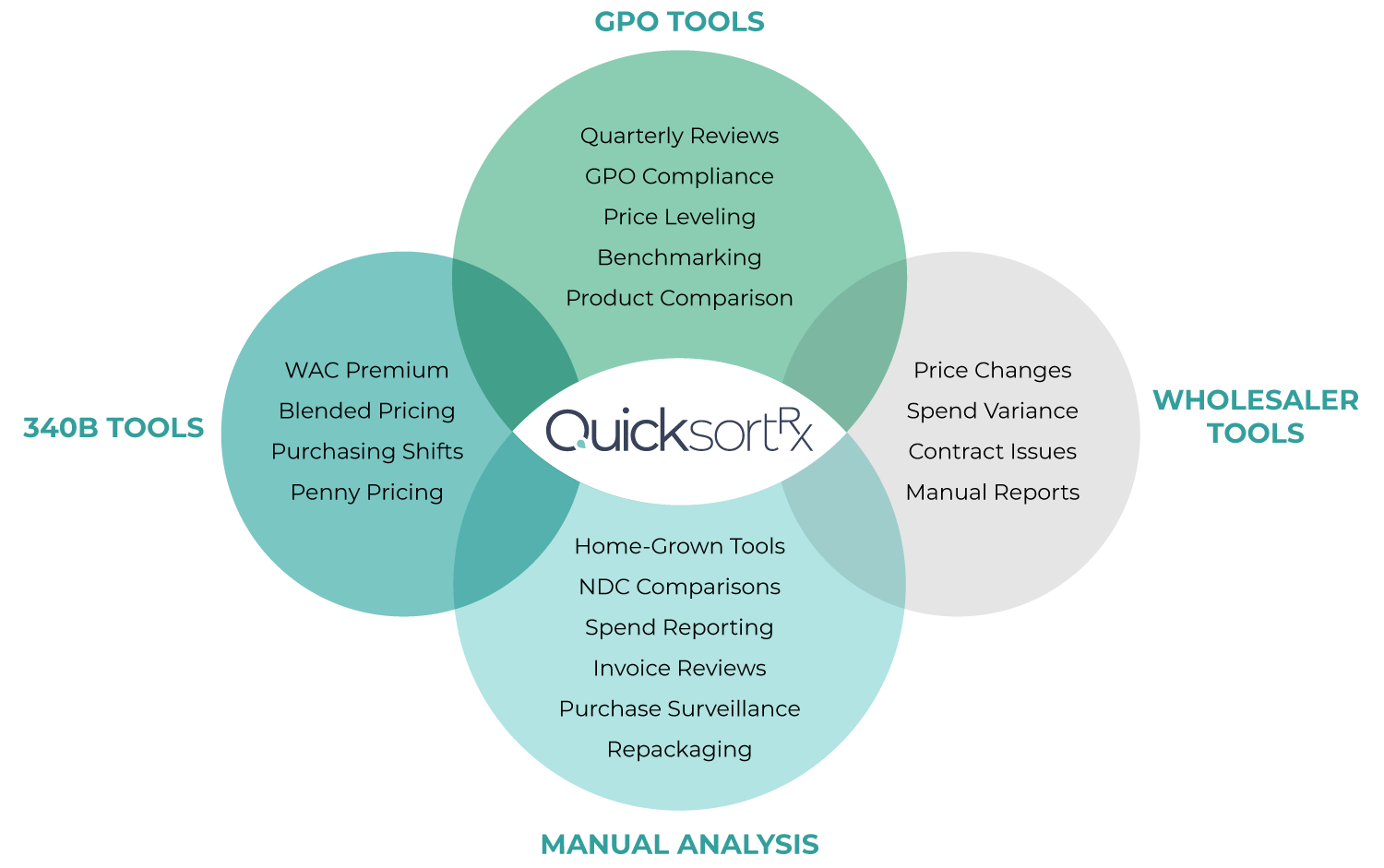Medication Supply Chain Management: 4 Shifts in Thinking to Help Your Bottom Line

Hospitals are under intense pressure to control their drug costs. Overall drug spend is forecasted to increase 3.78% for 2023, and has hit double digit increases multiple times over the past decade.
Between July 2021 and July 2022, there were 1,216 products whose prices exceeded the inflation rate of 8.5%, according to ASPE. The costs of missing changes like these can be expensive –– but at the same time, managing drug purchasing effectively is becoming increasingly difficult.
While pharmacy teams work tirelessly to stay on top of changes, the complexity, speed of change, and sheer volume of data can be overwhelming. Inevitably, organizations will need to decide where to focus their efforts.
Depending on how you prioritize, you could be missing out on key changes that will continue to drive up your health system’s costs.
Flipping the script on a few common misconceptions we see routinely in hospital pharmacy purchasing can help you prioritize for better results.
1. Prioritize Efforts Based on Opportunity (Instead of Spend)
A typical hospital can have 40,000 items in its catalog, with each having a 340B, GPO, and WAC price –– potentially more for each class of trade.
Because this volume of data can be challenging, pharmacy purchasing teams sometimes limit their reviews to their highest-spend products. It is not unusual for us to talk with organizations that only have time to examine their top 20-30% of NDCs by total spend, leaving the rest unexplored.
Top-spend medications frequently have patent protections, contract obligations, or other barriers to price competition. This limits your cost-saving opportunities to high-touch, clinically involved projects like utilization management. While these areas can be good places to start, top-spend drugs will have fewer and fewer opportunities to capitalize on as projects mature.
Through our analyses at QuicksortRx, we find hospitals have plenty of high-impact, low-effort opportunities with lower-spend products that fly under the radar.
Health systems that go beyond high-spend med review will routinely find 5- and 6-figure savings on low-cost medications like diphenhydramine and sucralfate where resolving minor TPA issues or taking advantage of price changes can drive significant savings with less time and effort.
Summary: Keep your eyes on high-cost meds, but don’t overlook smaller spend items. You can often have a bigger impact by percentage and total savings.
2. Avoid Viewing Drug Pricing in Silos
With specialization inside of a pharmacy purchasing teams, it’s easy to have multiple perspectives competing for product selection. Consider how inpatient buyers traditionally have focused on GPO price to find their preferred products. For disproportionate share hospitals, GPO price makes up only one piece of the puzzle.
Many factors should be considered in a med spend analysis. Without a holistic view of pricing and compliance, teams can’t make the best decisions for the organization.
Our customers sometimes see great inpatient GPO prices paired with outlandish WAC prices on a product. While the GPO price may help your spend on regular purchases, any exposure to WAC can quickly outstrip these savings and leave your hospital spending more overall per unit. This is especially important for hospitals that carve out Medicaid patients and will ALWAYS have some WAC.
When you then add in 340B pricing, contract compliance, a manufacturer’s ability to deliver, and operational challenges with specific drug packaging, you can end up with a big problem.
Summary: Before you commit, make sure you consider the bigger picture. Changes that look great in a single "silo" may affect your costs and operations much differently as a whole.

3. Stop Settling for Outdated Pharmaceutical Purchasing Data
Many hospitals have coped with the sheer volume of data by examining data less often or waiting on third-party reports that come months or quarters later. It is not unusual for hospital procurement decisions to be based on pricing and contract information that is 30-90 days old.
The problem with this approach to medication supply chain management is the lag it creates before you're able to act. Meanwhile, hospitals will continue to overpay until the savings opportunity is discovered months later.
Summary: Volatility in pricing, products, and availability has never been greater. Being able to react rapidly to the market will give your health system more agility and, over time, leverage over spend.
4. Don't Wait to Centralize Medication Supply Chain Management Decisions
As health system acquisitions have accelerated over the last decade, several organizations have taken advantage of their consolidation to improve contracts. However, many are still duplicating their analysis efforts at each individual site. With pharmacy resources more constrained than ever, a unified approach to pharmaceutical purchasing prevents duplicated work.
Even more important are the strategic benefits of centralization. A central view of pricing and compliance will improve visibility, accountability, and speed of response to the multitudes of factors influencing drug spend. Moreover, facilities aligned around the same strategy can more easily adopt tactics that support one another and the bigger picture for the health system.
We’ve helped a number of systems as they go from “loosely linked facilities” through standardization, and the ability to think and move as a unit absolutely shows up in their spend.
Summary: Mergers and acquisitions can be very effective in reducing costs, but only if you're working together effectively. To take advantage of economies of scale, you need to work towards a universal perspective.
Gaining Better Med Spend Insights for Your Organization
QuicksortRx helps health systems take control of their pharmacy supply chain. We unify purchase, price, and compliance data into one powerful platform to streamline med spend analysis, and coach your organization on how to navigate the medication market with ease. Learn more about how QuicksortRx can save you time and help your hospital with advanced pharmacy purchase analytics.
Tags:
Pharmacy Cost Savings